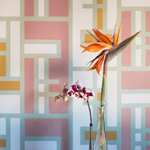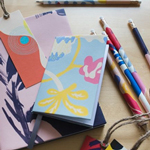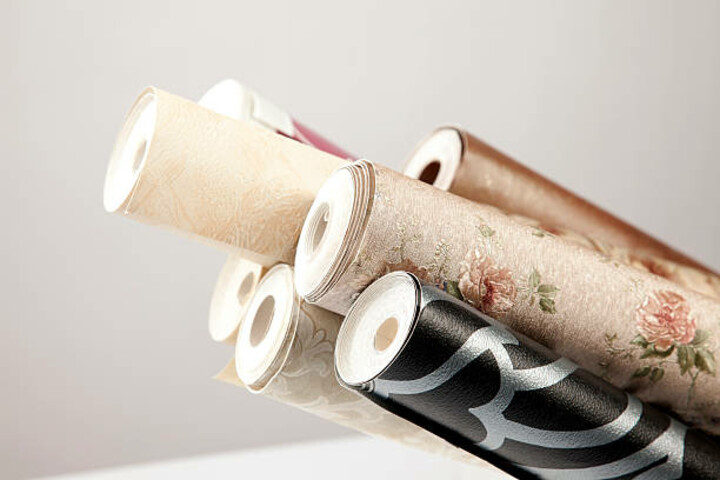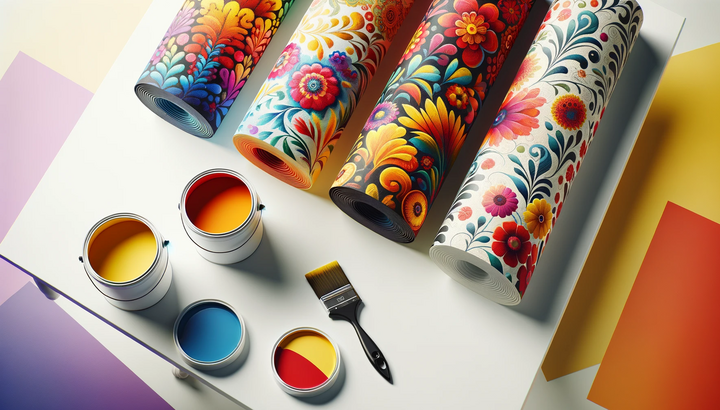
When deciding how to choose between wall mural and paint, homeowners are often confronted with many options and considerations. This article will guide you through the key factors in making this choice, covering three main areas: the advantages of wall murals, the benefits specific to mural materials compared to paint, and other essential considerations for choosing between the two.
The advantages of wall murals
First, we'll delve deep into the advantages of wall murals, showcasing why they might just be the superior choice for your interior.
They offer endless design possibilities
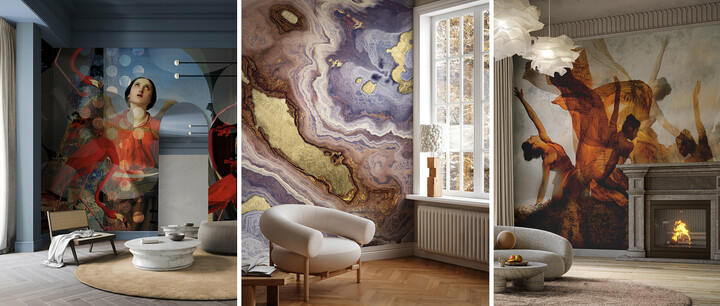
Wall murals present a world of design potential that simple paint just can't match. Think of a mural as a canvas where you can display intricate patterns, imitate various surfaces and textures, or even exhibit iconic pieces of art. With such diversity, wall murals allow homeowners to transform ordinary rooms into stunning galleries or thematic spaces. Whether you want an Italian Renaissance vibe with a famous painting, a realistic look of marble, wood, or other surfaces and textures, or a vibrant scenery depicting the ocean, cities, and beautiful places— wall murals can do it with unmatched visual depth and complexity.
And if you're pondering over the wealth of design options, Photowall offers an astounding array of choices. With a collection that boasts over 30,000 wall mural designs, you'll surely find something that caters to every motif, interior theme, pattern, color, and whim you might have. If you need tips on how to choose a wall mural design because of thousands of options, here’s the most helpful guide: How to choose a wall mural
Wall murals offer unparalleled customization options
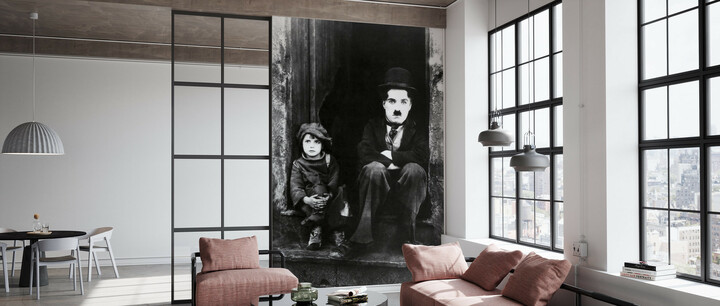
Unlike conventional paint, which confines you to a limited palette of colors, wall murals elevate personalization to an entirely new level. Imagine transforming a cherished photo, a child's artwork, or a design you've created into a grand wall display. This unique feature of wall murals ensures that every detail, every color, and every nuance of your chosen image is replicated with precision, allowing you to infuse a space with your personal touch in ways paint simply can't.
However, it's crucial to note that while the idea of customization is enticing, not all mural providers offer this service. Photowall stands out in this regard. Not only does it allow for individualized wall designs, but it also provides editing assistance to ensure your vision translates perfectly onto your wall. Their user-friendly customization process is designed to guide you every step of the way, ensuring satisfaction and perfection. Here’s a guide on how to make a custom wall mural: How to make custom wallpaper for your home
The longevity and robustness of wall murals
Wall murals, especially those of high quality, boast a significant advantage in terms of lifespan, often gracing your walls for up to 15 years. However, it's essential to note that the durability varies with the type of wallpaper. Take, for example, Photowall's non-woven wallpapers: they stand out for being fire-resistant and less susceptible to fading when exposed to sunlight. Additionally, they offer a premium line of wallpapers that resist scrapes, ensuring your spaces remain stylish for years. Not to be left out, their peel-and-stick murals are crafted from top-notch adhesive material. Such superior features aren't a given with all wallpapers.
Conversely, paint might present more maintenance challenges. Typically, after a span of 5-10 years, it might start showing signs of wear. Factors like exposure to sunlight play a part here. Ultraviolet rays, in particular, can induce fading, peeling, or even blistering of the paint, thereby compromising its visual appeal and bond with the wall. This means that walls with direct sunlight exposure might demand more frequent repainting.
The superior concealing power of wall murals
Wall murals serve as a handy solution for covering up small imperfections on walls. They efficiently camouflage minor dings and tiny fissures, providing a consistently polished look to your walls. That said, for optimal adherence to the mural, the wall should maintain a degree of smoothness. Major irregularities could pose challenges to the mural's sticking ability.
In comparison, while paints, especially those with a matte finish, can mask imperfections, they don't quite match the effectiveness of wall murals. Addressing larger flaws with paint might involve using specialized primers or techniques such as skimming. This not only complicates the process but could also inflate the costs.
Advantages that depend on the wall mural type
While wall murals generally offer aesthetic and practical advantages, the specific benefits can vary based on the type of material used. This section sheds light on these differences and helps you make an informed choice while comparing them with paint.
Applying wall murals and paint
Selecting between wall murals and paint isn’t just about appearance; the ease of application plays a significant role, too. So, here’s a comparison between paint and wall mural materials when it comes to the application process.
Wall murals that are easy to apply
• Peel-and-stick wall murals: These are user-friendly options suitable for DIY enthusiasts. Simply peel off the backing and stick them directly to the wall. The self-adhesive nature eliminates the need for wallpaper paste or professional tools.
• Non-woven wall murals: Known for their durability, these murals don't stretch or contract, making them easier to handle and hang. They are also preferred for their cleaner installation, using the paste-the-wall technique.
Additionally, Photowall delivers your wallpaper in strips, carefully labeled in the order they should be hung. This meticulous organization makes transforming your room a stress-free experience. The company also provides free wallpaper glue with every order of non-woven murals, a simple-to-mix powder ready for wallpapering in just five minutes. Here’s everything you need to know about installing wall murals: How to install wall murals
Wall murals that are not easy to apply
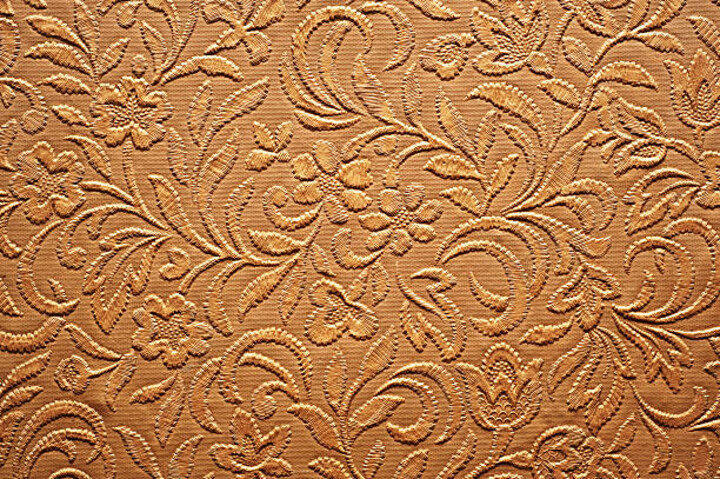
• Flocked or embossed wallpapers: Their textured nature makes them challenging to align and requires careful handling to avoid damaging the design.
• Metallic wallpapers: These often have a shiny finish, which, while looking luxurious, can highlight any imperfections on the wall or in the application. They tend to be less forgiving than matte finishes and may show bubbles or wrinkles more readily.
• Fabric-backed vinyl wallpapers: Heavier than most other wallpapers, these can be difficult to hang. They're designed for high-traffic areas due to their durability, but their weight and texture make them more challenging to align and adhere smoothly.
Paint application
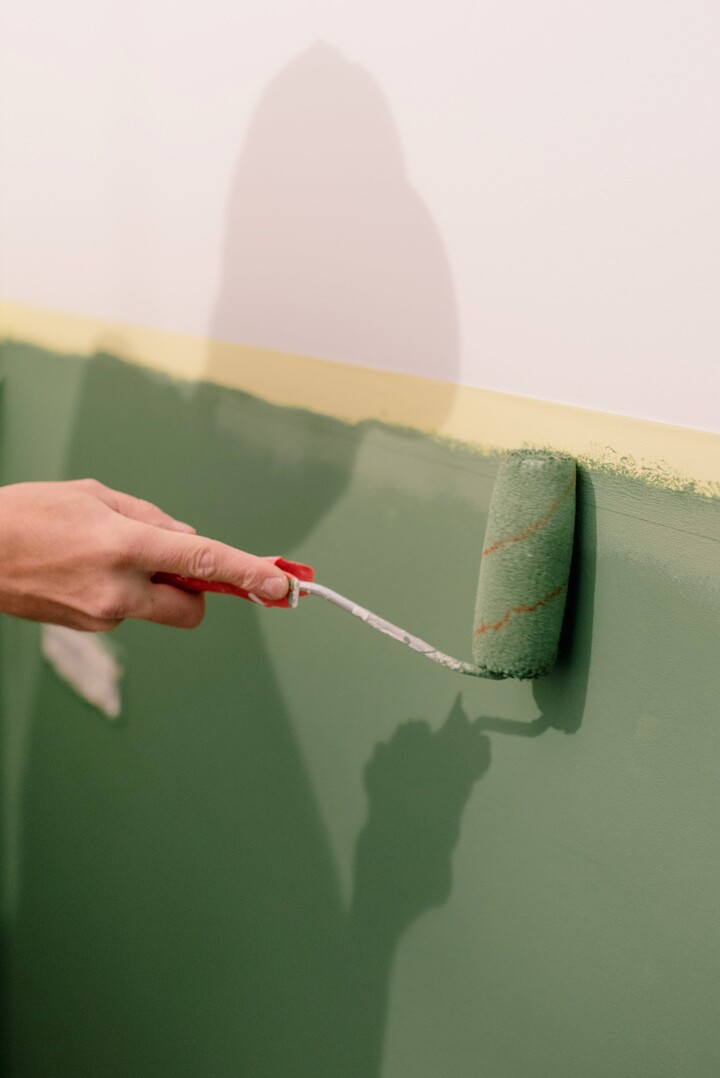
Applying paint seems straightforward, but it requires a series of steps for a flawless finish. Initially, the wall surface must be cleaned and primed. Once primed, multiple coats of paint may be needed, with adequate drying time between each layer. While painting offers flexibility in terms of mixing and matching colors, achieving a consistent shade across the entire wall demands attention to detail and technique. Furthermore, factors like the paint's finish (matte, satin, or glossy) and the room's humidity can influence the application process and the final appearance.
Maintaining wall murals and paint
Maintaining the appearance and longevity of your wall decorations, whether they're murals or paint, is crucial. Here's what you need to know about their upkeep:
Wall murals that are easy to clean
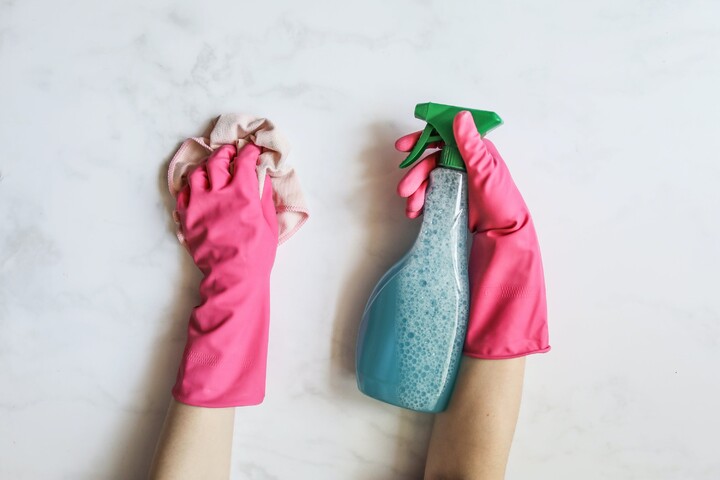
If you desire wallpapers that are easy to clean, Photowall’s non-woven wallpapers are ideal, as they can be refreshed with just a damp cloth. Moreover, their premium wallpapers can tolerate cleaning products, offering enhanced convenience. The peel-and-stick variants from Photowall are also user-friendly, allowing for easy wiping and showing resilience against surface stains. For an in-depth guide, visit: How to clean a wall mural
Wall murals that require an intricate cleaning process
• Bamboo wallpapers: Being a natural material, they can be sensitive to moisture and harsh cleaning agents.
• Grasscloth wallpapers: Made from woven grasses, these murals can be tricky to clean without fraying or discoloring the material.
• Textured or embossed wall murals: Due to their raised patterns, they can trap dust and dirt, making them harder to clean without damaging the design.
• Flocked wallpapers: Their velvety texture is prone to attracting dust and requires gentle cleaning to avoid damaging the raised pattern.
Cleaning painted walls
Paint, especially in lighter hues and matte finishes, can easily show blemishes. Though touch-ups with a fresh coat or spot treatments are relatively straightforward, some finishes like semi-gloss or high-gloss are more resistant to stains, making them ideal for busy areas like kitchens and restrooms. Nonetheless, paint is prone to chipping, cracking, and potential sun-induced fading, which may require occasional repainting.
Removing wall murals and paint
Considering a change in wall decor? Here's a quick look at what's easy to remove and what might require a bit more elbow grease.
Wall murals that are easy to remove
Photowall’s non-woven wallpapers utilize a paste-the-wall technique, simplifying the removal process. These wallpapers can be dry-stripped from the wall without inflicting damage. Moreover, Photowall’s peel-and-stick wallpapers offer another great alternative. These can be removed without leaving behind any residue, which is ideal for renters or individuals who enjoy frequently changing their decor.
Wall murals that are not easy to remove
• Vinyl-coated wallpapers: Their vinyl layer makes it challenging for removal solutions to penetrate, rendering them more stubborn to take off.
• Flocked wallpapers: Depending on the adhesive used, their raised patterns can sometimes mean they stick more firmly to walls.
• Bamboo wallpapers: Their natural and durable material, coupled with certain adhesives, can make removal a tougher task.
• Textured or embossed wallpapers: Strong adhesive can settle deeply into their designs, making them tedious to remove.
If you need help with removing wall murals, here’s everything you need to know: How to remove wall murals
Paint
Paint is generally easier to remove or paint over than certain wallpaper types, including vinyl-coated, foil, flocked, bamboo, textile, and textured or embossed wallpapers. However, changing from a darker to a lighter shade may require multiple layers of primer and paint, making it more time-consuming than it initially appears.
Things to consider when choosing between wall murals and paint

Selecting between wall murals and paint hinges on various personal and practical factors. Here's a guide to help you decide based on specific situations:
• If you're renting a place: Wall murals, especially the self-adhesive types, are a boon for renters. They offer a temporary solution that can dramatically change the look and feel of a space without the permanent commitment or potential damage of paint. When it's time to move, they can be easily removed without leaving any residue, ensuring your security deposit remains intact.
• If you prefer vibrant sceneries: If your heart leans towards breathtaking landscapes, intricate patterns, or vivid artistry that paint cannot replicate, then wall murals are your answer. They can transform your space into a visual treat, showcasing scenes that can transport you to different worlds, all from the comfort of your home.
• If covering walls in moisture-prone or high-heat areas: Paint, particularly special formulations designed for moisture-prone or high-heat areas, is the safer bet. These paints are crafted to withstand humidity, splashes, or the rigors of a busy kitchen. Even the best quality wall murals might struggle over time in such conditions, with potential peeling or damage from consistent exposure to moisture or heat.
• If you want an environmentally-friendly choice: Wall murals, particularly those made without PVC and using water-based inks, tend to be a more eco-friendly choice. Paint, especially older types, can emit volatile organic compounds (VOCs), which are not only harmful to the environment but can also affect indoor air quality. Opting for murals made of sustainable materials ensures you're making a choice that's kinder to the planet. Here’s how to choose an eco-friendly wall mural.
• If you can't decide between paint and wall mural: Combining the best of both worlds is a trending approach. Consider the idea of an accent wall. This involves designating one wall (often a prominent or focal wall) to showcase a wall mural while painting the remaining walls. It offers a striking contrast, setting the stage for a room's ambiance. This method allows you to enjoy the depth and vibrancy of a wall mural while still retaining the simplicity and elegance of paint. For instance, you could have a serene forest mural on one wall and complement it with muted green paint on the others.
Deciding between paint and wall murals should not only rest on aesthetic preferences but also on practical considerations. By assessing the specific needs of your space and your own personal circumstances, you can find the perfect fit that complements your style and lifestyle.
 Australia
Australia
 Austria
Austria
 Belgium (Dutch)
Belgium (Dutch)
 Canada (English)
Canada (English)
 Denmark
Denmark
 Estonia
Estonia
 Finland
Finland
 France
France
 Germany
Germany
 Ireland
Ireland
 Italy
Italy
 Luxembourg (French)
Luxembourg (French)
 Netherlands
Netherlands
 New Zealand
New Zealand
 Norway
Norway
 Poland
Poland
 Portugal
Portugal
 Romania
Romania
 Singapore
Singapore
 Spain
Spain
 Sweden
Sweden
 Switzerland (French)
Switzerland (French)
 USA
USA
 United Kingdom
United Kingdom
 Other Countries
Other Countries


